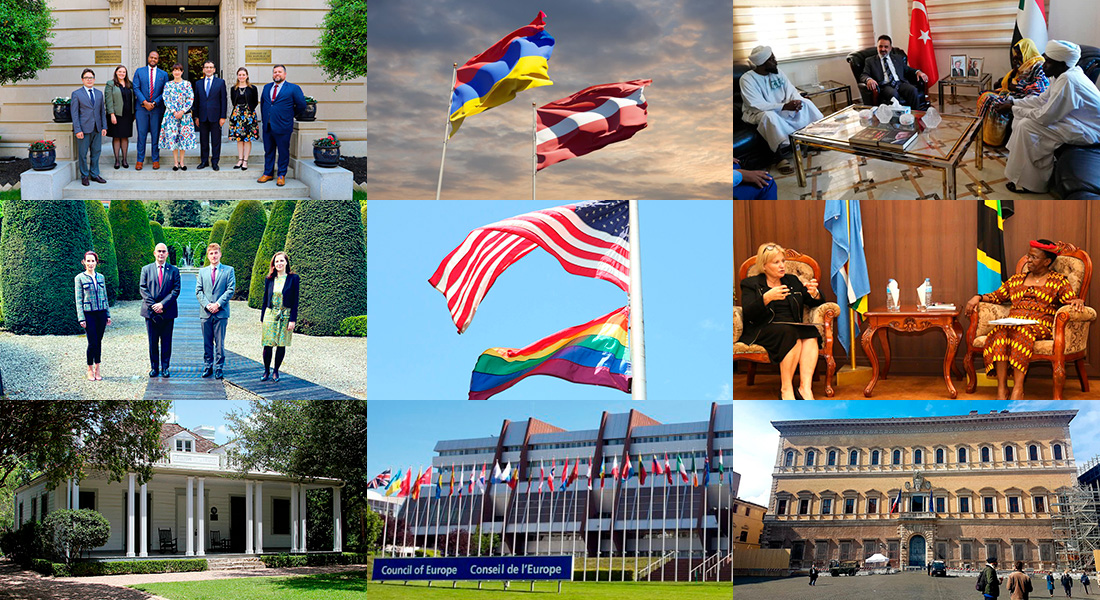Diplomats use social media to project a harmonious image
In a world where social media is often a stage for attention-seeking, one group stands out for its desire to blend in: diplomats. A new study harnesses the power of artificial intelligence to analyze over 55,000 images shared on the social media platform X (formerly Twitter) by more than a thousand diplomats worldwide, uncovering a striking uniformity in their visual presentations.

While most public figures leverage social media to showcase their personality and grab attention, diplomats seem to favor a different approach. The study, titled ‘The Social Aesthetics of Digital Diplomacy’ and published in the scientific journal International Political Sociology, reveals that diplomats’ images frequently convey a harmonious and consistent aesthetic, often concealing underlying international conflicts.
A staged harmony
“Diplomatic social media images present a harmonious version of situations where international conflicts are carefully concealed. The repetition of the same harmonious scenes, characterized by a Western aesthetic, is communicated in the narrative of a common ‘we’ - a narrative that is also about authority and status,” says Anna Helene Kvist Møller, PhD fellow at SODAS, University of Copenhagen.
Along with Professor Rebecca Adler-Nissen, Assistant Professor Yevgeniy Golovchenko, and Assistant Professor Kristin Anabel Eggeling, she has conducted the study using cutting-edge AI techniques, including image classification with neural networks. They analyzed a unique dataset comprising 55,559 images from tweets by ambassadors around the globe.
The study highlights two key aspects of the social aesthetics in diplomatic images. Firstly, uniformity across borders.
“It is striking that diplomats around the world show images with the same narrow repertoire, whether they are shared from Senegal or Vietnam, 96 percent of all images fall into a few categories, such as meeting tables, handshakes, and flags. Contrary to expectations, these images emphasize ideals of harmony and international cooperation, concealing underlying conflicts,” explains Rebecca Adler-Nissen.
Secondly, the images shared by diplomats also reflect and reinforce social boundaries and hierarchies.
“By using computer vision technology, we've shown that diplomats largely adhere to a Western visual repertoire, showcasing archetypal actions and objects like well-organized meeting rooms and classic ‘family photos’,” notes Anna Helene Kvist Møller.
“The study moreover shows how seemingly ‘boring’ images exert political effects. By being repeated over and over again, the images uphold what we call ‘social boundaries and hierarchies’, that is, ideas about who is who and who is how important that speak to bigger questions of international order, cooperation and power,” adds Kristin Anabel Eggeling.
Implications for global politics
The researchers argue that these findings have significant implications for our understanding of diplomacy and social media’s role in global politics.
“"First of all, it's important to remember that the patterns we identify on X do not mean that the world's diplomats are the same. But our mapping shows that ambassadors around the world choose to highlight the same aspects of their profession in carefully curated images,” explains Yevgeniy Golovchenko.
“By systematically analyzing such a large dataset, we reveal that diplomats’ use of social media reflects tradition rather than the breach of social codes and diplomatic protocol. And we see no evidence that, for example, Asian, African or South American ambassadors present a different image of their work than their European and North American colleagues,” emphasizes Rebecca Adler-Nissen.
The study concludes that social media platforms can perpetuate existing diplomatic norms and traditions rather than disrupting them. The researchers suggest future studies could explore the implications of this visual mediation in diplomacy and its impact on global and local contexts, utilizing AI to further investigate other forms of self-presentation in digital international politics.
The study was funded by Rebecca Adler Nissen's grants from the European Research Council and the Carlsberg Foundation. You can read the full study here.
Contact
Anna Helene Kvist Møller
PhD fellow, SODAS
Mail: ahkm@sodas.ku.dk
Phone: +45 41 41 23 41
Rebecca Adler-Nissen
Professor, Department of Political Science, and Deputy Head of Centre, SODAS
Mail: ran@ifs.ku.dk
Phone: +45 30 22 40 75
Simon Knokgaard Halskov
Press and communications advisor
Mail: sih@samf.ku.dk
Phone: +45 93 56 53 29
